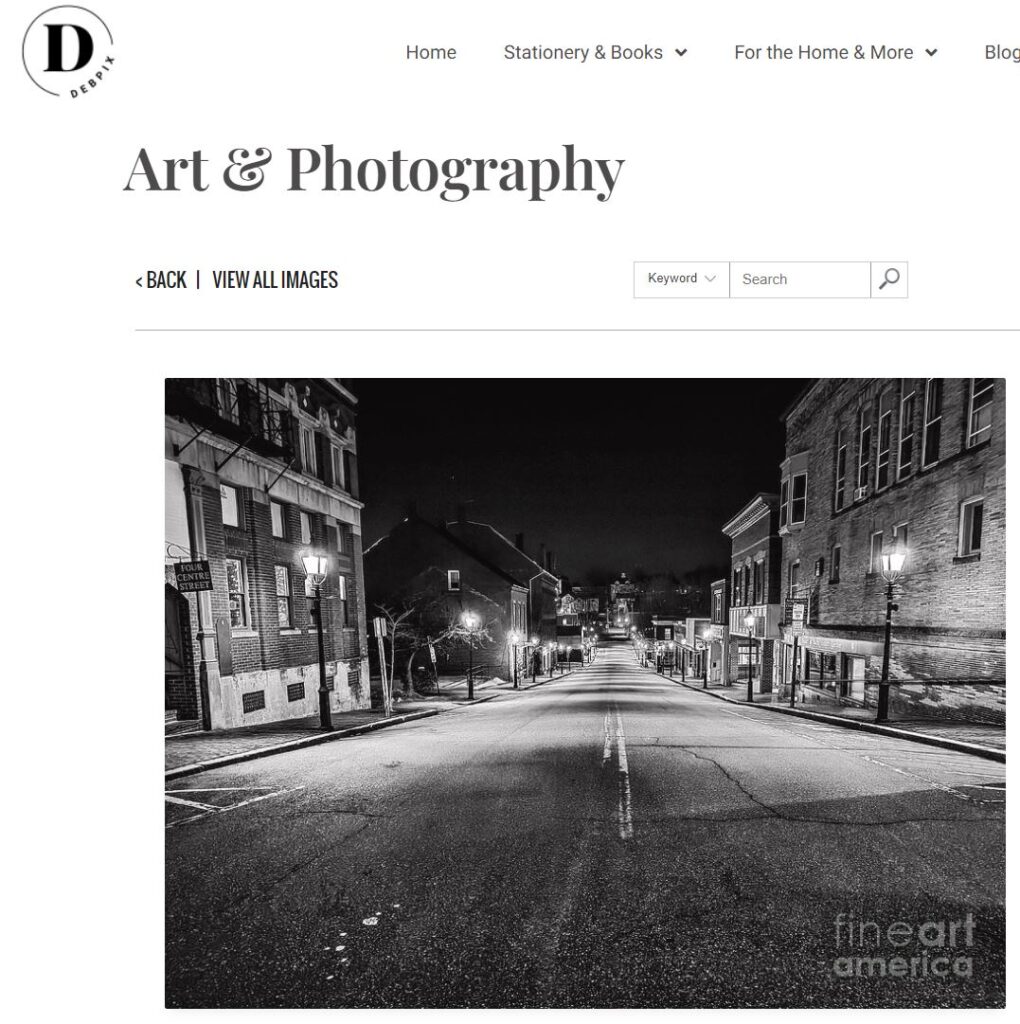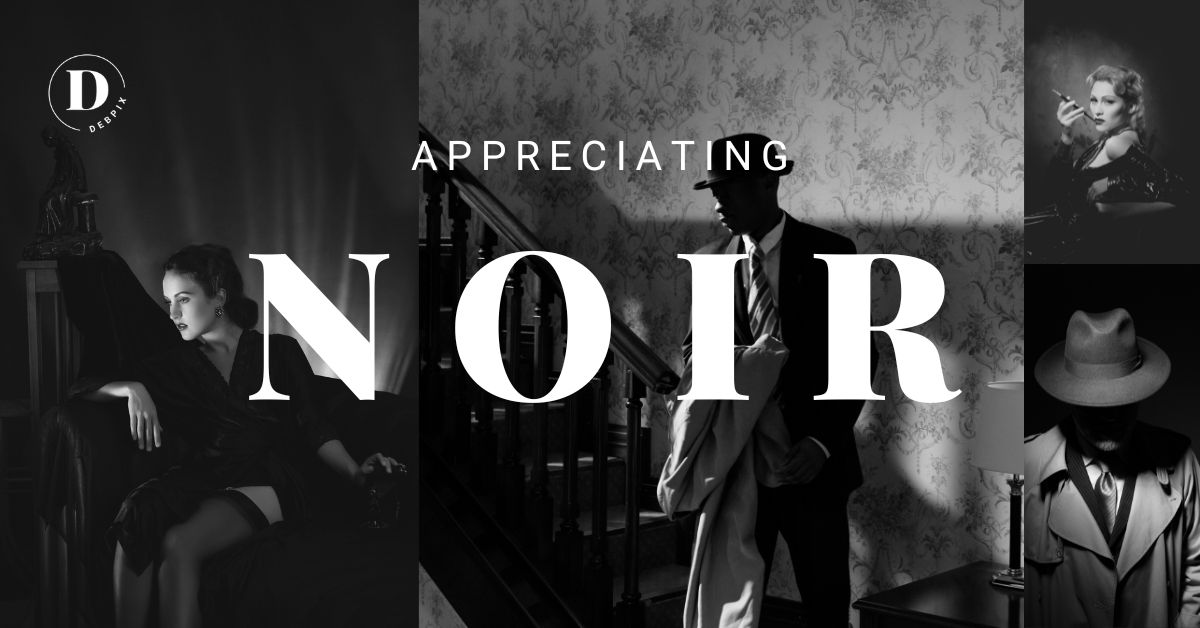Aligned with much of my photography and design styles in terms of an appreciation for the past, for years I’ve been a huge fan of the noir style of filmmaking and imagery, purely from an artistic and visual perspective. Noir as a visual art form is breathtaking to me. It’s elegant. Beautiful. Few styles evoke a sense of mystery and allure as captivating as noir.

The noir genre emerged in the early 1940s and quickly became a visual and narrative masterpiece that continues to captivate audiences today. From the expressive use of light and shadow to the distinct high-contrast imagery, noir has left an indelible mark on the world of art and cinema.
I have listed on my mood board, bucket list, project list, etc., creating a purposeful and deliberate body of visual work in the noir style. I don’t know when yet. The pandemic sort of sidelined me and I’m out of practice with my photography. I hope to take advantage of the warm weather to get some practice shots in. Perhaps it will be on my plan for next year. In the meantime, I will continue to appreciate what I find online.
Table of Contents
Origins and Historical Significance
Noir, a French term meaning “black,” emerged during the post-World War II era, heavily influenced by the disillusionment and moral ambiguity prevalent at the time. It drew inspiration from the hard-boiled crime novels popularized by writers like Raymond Chandler and Dashiell Hammett. These stories typically featured flawed protagonists, fatalistic narratives, and a distinctive visual style characterized by chiaroscuro lighting, deep shadows, and skewed camera angles.
The influence of German Expressionism, with its emphasis on visual distortion and psychological turmoil, also played a significant role in shaping the noir aesthetic. German directors such as Fritz Lang, with films like “M” (1931) and “Metropolis” (1927), brought a brooding atmosphere and stark visuals to their work, inspiring many American filmmakers.
Lighting and Contrast
One of the defining elements of noir is the mastery of light and shadow. Noir cinematography relies on the interplay between light and darkness to create a visually striking and emotionally charged atmosphere. The use of low-key lighting, often achieved through high-contrast black-and-white cinematography, heightens the sense of drama and intrigue.
The chiaroscuro lighting technique, prevalent in classical art, is employed extensively in noir films. It emphasizes the contrast between light and shadow, with deep blacks and bright highlights, creating a sense of depth and texture. This interplay accentuates the contours of characters’ faces, highlighting their inner conflicts and duplicity.
The use of light in noir is also symbolic, reflecting the moral ambiguity and hidden truths that often permeate the narrative. Light sources are frequently positioned strategically to create stark, elongated shadows, visually representing the blurred line between good and evil, truth and deception. These expressive visuals draw the viewer into a world where nothing is as it seems, engrossing them in the mysterious underbelly of society.
Contemporary Influence
Though the classic era of noir reached its peak in the 1940s and 1950s, its influence can be seen in the work of many contemporary filmmakers. The noir style has transcended its original boundaries and evolved into neo-noir, a modern homage to the classic genre.
Directors such as Quentin Tarantino and the Coen brothers evoke the spirit of noir in their crime dramas, injecting a nostalgic flair into their narratives. Filmmakers such as David Fincher, with movies like “Se7en” (1995) and “Gone Girl” (2014), and the Coen Brothers, with “Fargo” (1996) and “No Country for Old Men” (2007), have skillfully incorporated noir elements into their narratives. These filmmakers employ the same atmospheric lighting techniques, use of shadows, and morally complex characters to create a sense of tension and unease in their films.
Furthermore, noir has also found its way into other genres, influencing movies like “Blade Runner” (1982), a science fiction neo-noir, and “Sin City” (2005), a visually stunning graphic novel adaptation. Additionally, modern photographers, graphic novelists, and video game designers often draw inspiration from the noir style, recreating its shadowy ambiance and morally complex narratives. The enduring appeal of noir imagery lies in its ability to capture the human condition, reflecting the darkness and complexity of our own lives.
These examples demonstrate the versatility and enduring allure of the noir style.
Conclusion
Film noir stands as a testament to the enduring power of artistic storytelling. Through masterful manipulation of light and shadow, noir filmmakers create a visual tapestry that enthralls audiences and beckons them into a world where beauty resides in the shadows. As we appreciate the noir style of filmmaking and imagery, we embark on a journey that bridges the past and the present, immersing ourselves in a timeless realm where mystery and artistry converge. This is where I want to create.
In the meantime, appreciate existing bodies of work (below) and the related video:


